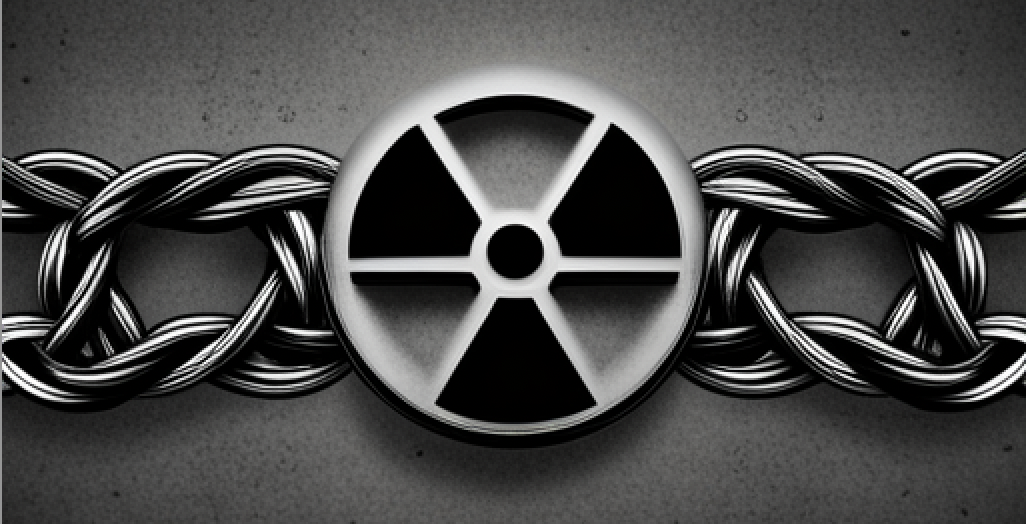
Rabia Akhtar
The regional security architecture in South Asia is currently grappling with a range of multifaceted challenges due to the intricate strategic chain connecting several key countries. This chain, which includes the United States, China, India, and Pakistan, has inadvertently positioned Pakistan at the tail end of the chain, rendering it susceptible to the disruptive impacts of an ongoing arms race. This situation further exacerbates Pakistan’s security dilemma, exponentially increasing the complexity of the prevailing security landscape in the region.
The current situation in the region presents a significant challenge that goes beyond a simple dyadic relationship between India and Pakistan. It is an intricate web of interdependencies that requires a more nuanced understanding to fully grasp its complexities. Rather than limiting our focus to the nuclear dynamics between India and Pakistan, I propose expanding our intellectual horizon to consider the concept of a “nuclear tetraplex”. This concept illuminates the intricate dynamics involving not only these two nations but also the United States and China, creating a comprehensive understanding of a four-way, tetra nuclear complex. By broadening our perspective, we can appreciate the complexity and interconnectedness of these relationships beyond traditional frameworks. This new approach recognizes that the strategic parity between India and Pakistan is not solely influenced by India, but also by the broader strategic chain involving the US-China competition, which has an impact on their relations.
India’s efforts to modernize its military are driven, in large part, by its concerns about China’s growing influence in the region. With China’s military buildup being seen as a response to the United States’ presence in the same area, a delicate balance emerges.
In this multi-dimensional dynamic, Pakistan finds itself delicately maneuvering through the ebb and flow of power dynamics and strategic landscapes. Consequently, it is compelled to dedicate substantial resources to match the prowess of its more formidable neighbors.
This complex interplay of interests and power dynamics can potentially have a destabilizing effect on the entire region, making it imperative for all stakeholders to recognize and navigate these intricate dynamics with caution and foresight.
One of the key ways in which this situation is likely to further complicate is through the arms race to acquire emerging technology that has a disruptive impact on strategic stability. This could include technologies such as cyber warfare, artificial intelligence, and autonomous weapons systems. With the advancement of these technologies, nations are increasingly vying to gain a competitive edge, heightening the complexity of the situation. The rapid evolution and integration of these tools have the potential to upend traditional models of conflict and security, reshaping the landscape in unprecedented ways.
Given the multifaceted challenges faced in the Indo-Pacific region, it becomes increasingly imperative for policymakers and analysts to adopt a thorough and holistic approach towards comprehending its intricate security architecture. This entails moving beyond the conventional analysis of dyads and triads, and delving deeper into the intricate web of interactions, interdependencies, and alliances that influence and shape the region’s dynamic security landscape. By embracing this nuanced perspective, policymakers and analysts can develop and implement more effective and impactful policies and strategies that contribute to fostering lasting stability and enhanced security throughout the region.
The strategic chain involving the United States, China, India, and Pakistan in the Indo-Pacific region has significantly influenced the region’s security architecture. The actions of these major powers are intertwined and have adverse consequences for smaller nuclear nations such as Pakistan. It is imperative for these great powers to acknowledge the second order effects resulting from their strategic competition, within the framework of their nuclear responsibilities. Taking the necessary steps to stabilize the region is crucial. Only then will the intricate interrelations realign and pave the way for a more peaceful and secure Indo-Pacific.
Prof. Dr. Rabia Akhtar is Director, Center for Security, Strategy and Policy Research (CSSPR), The University of Lahore.





